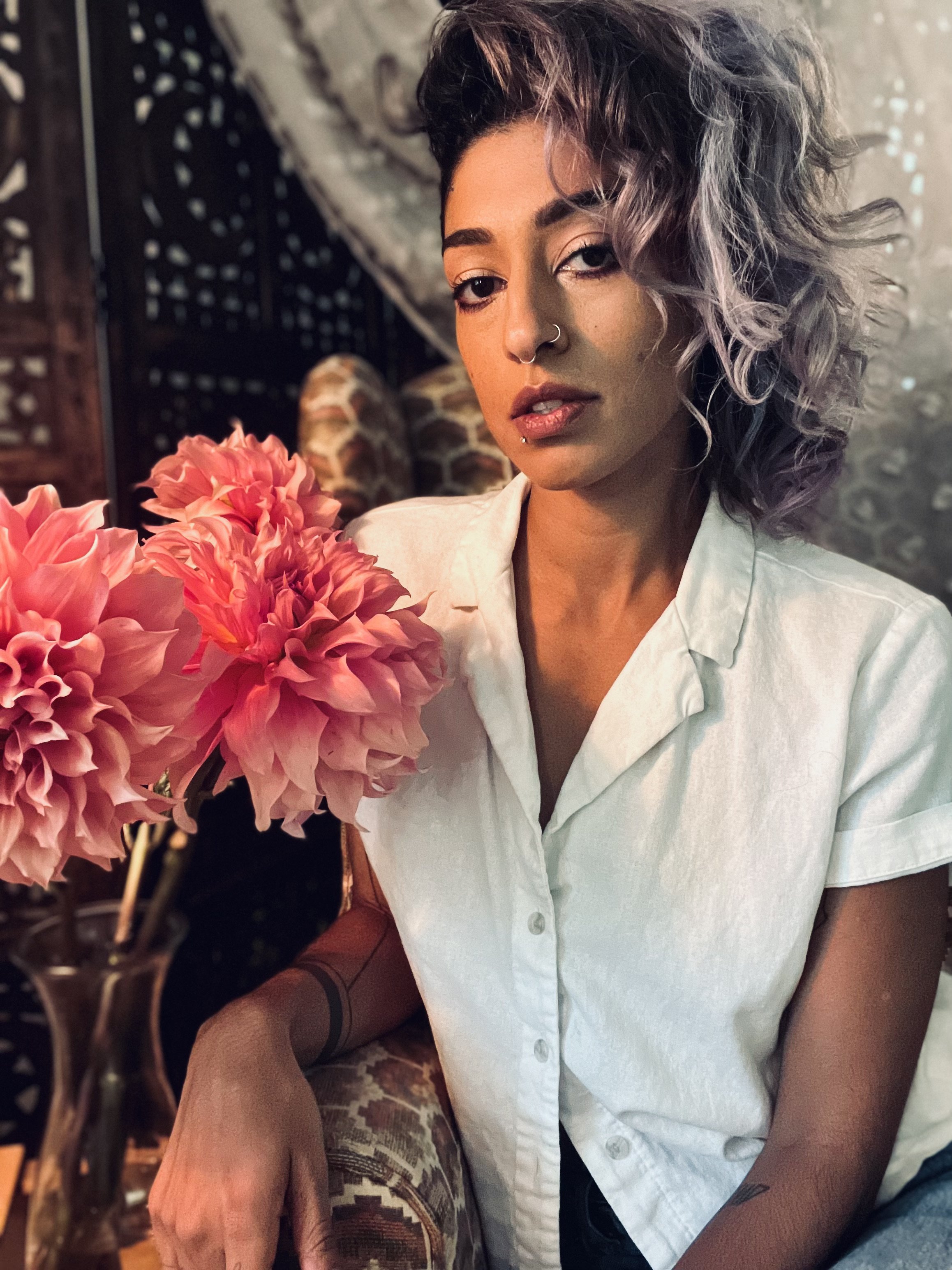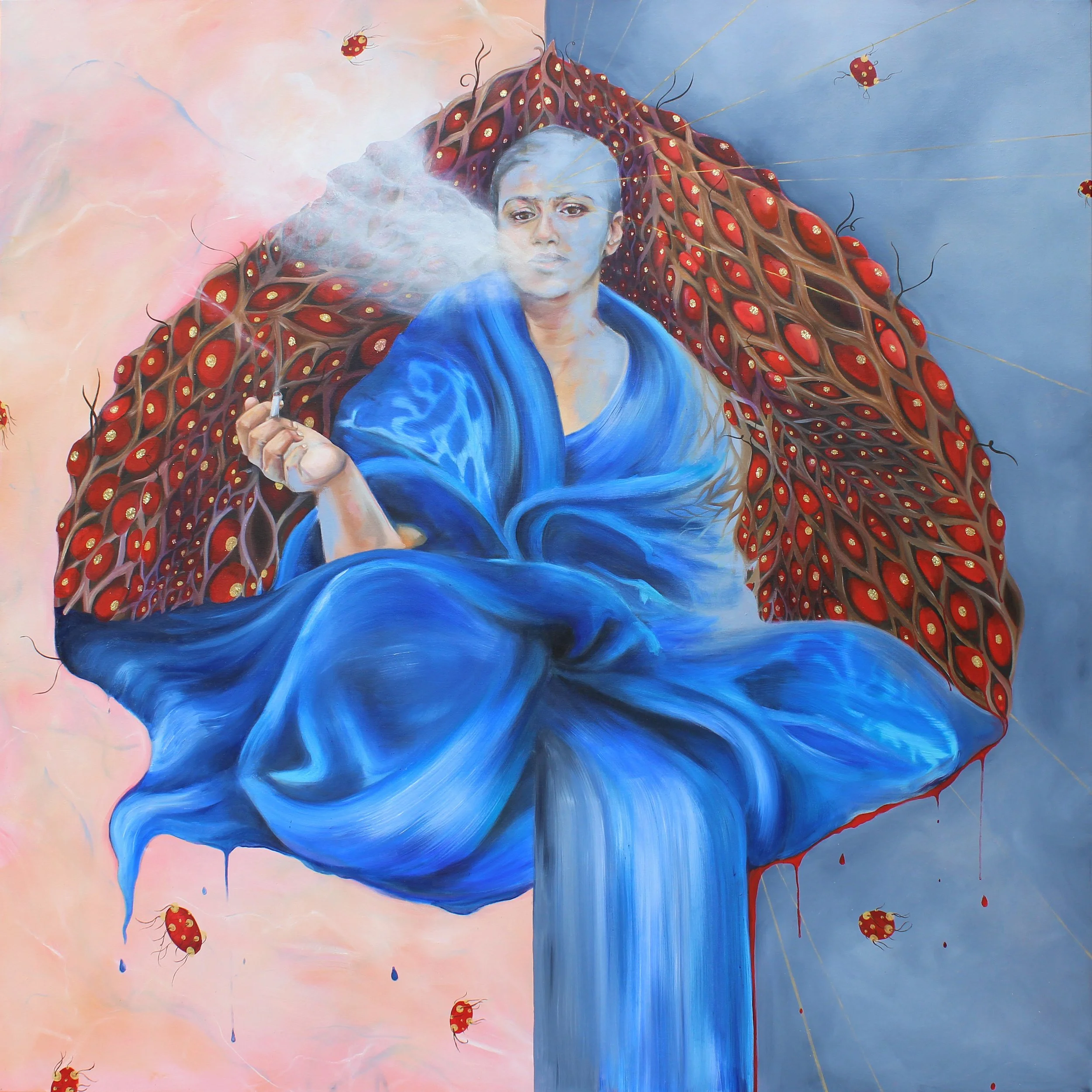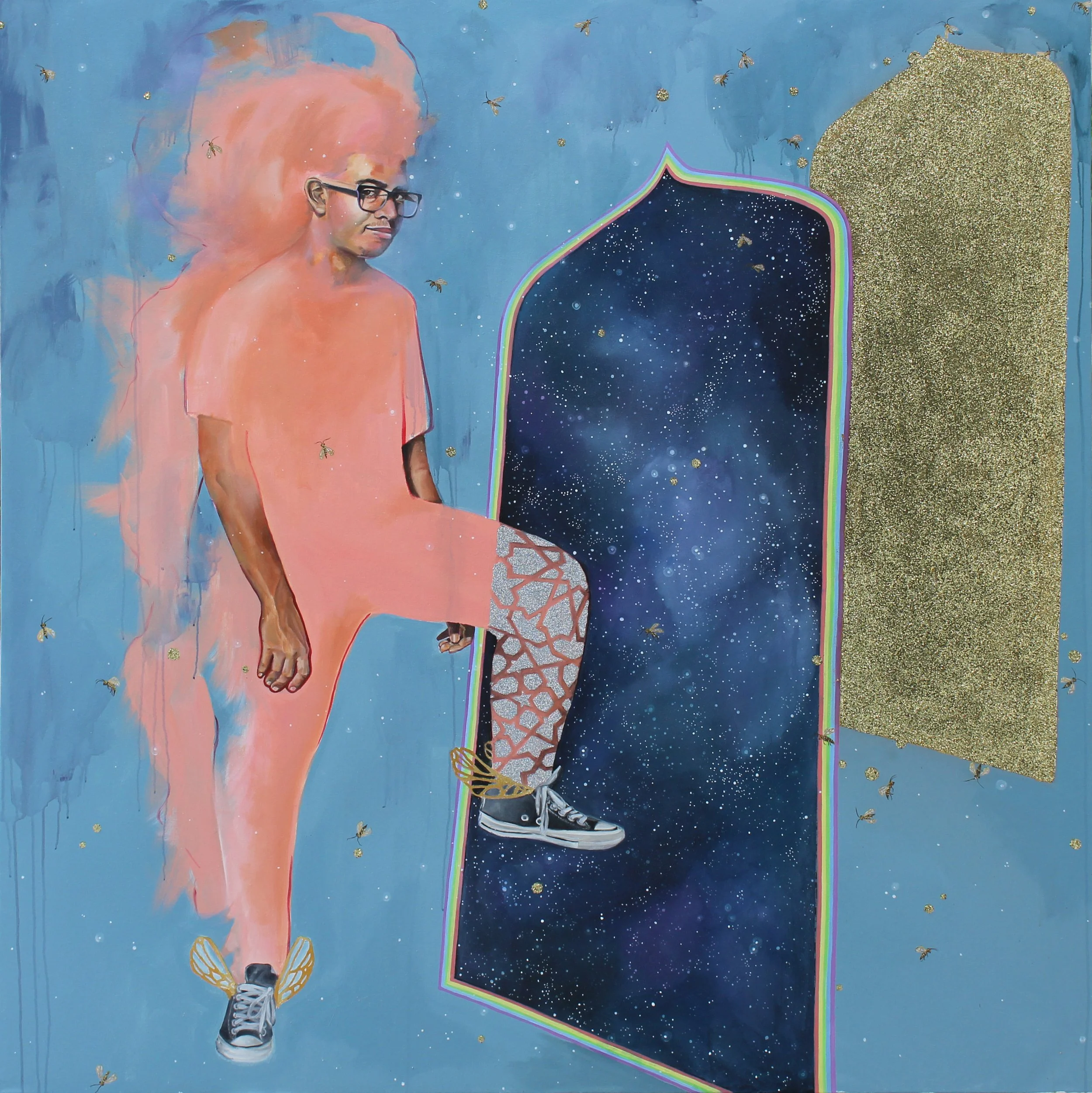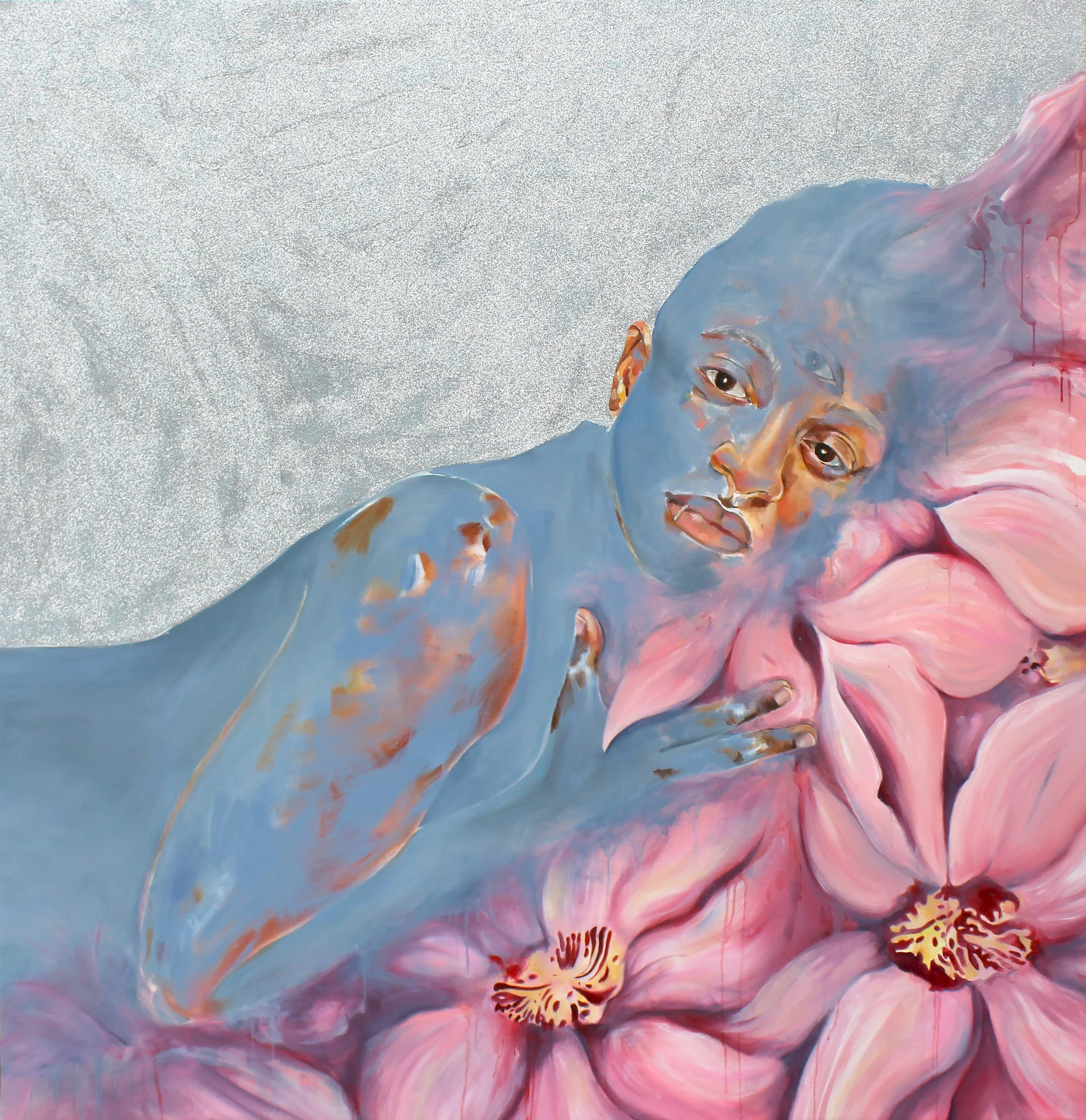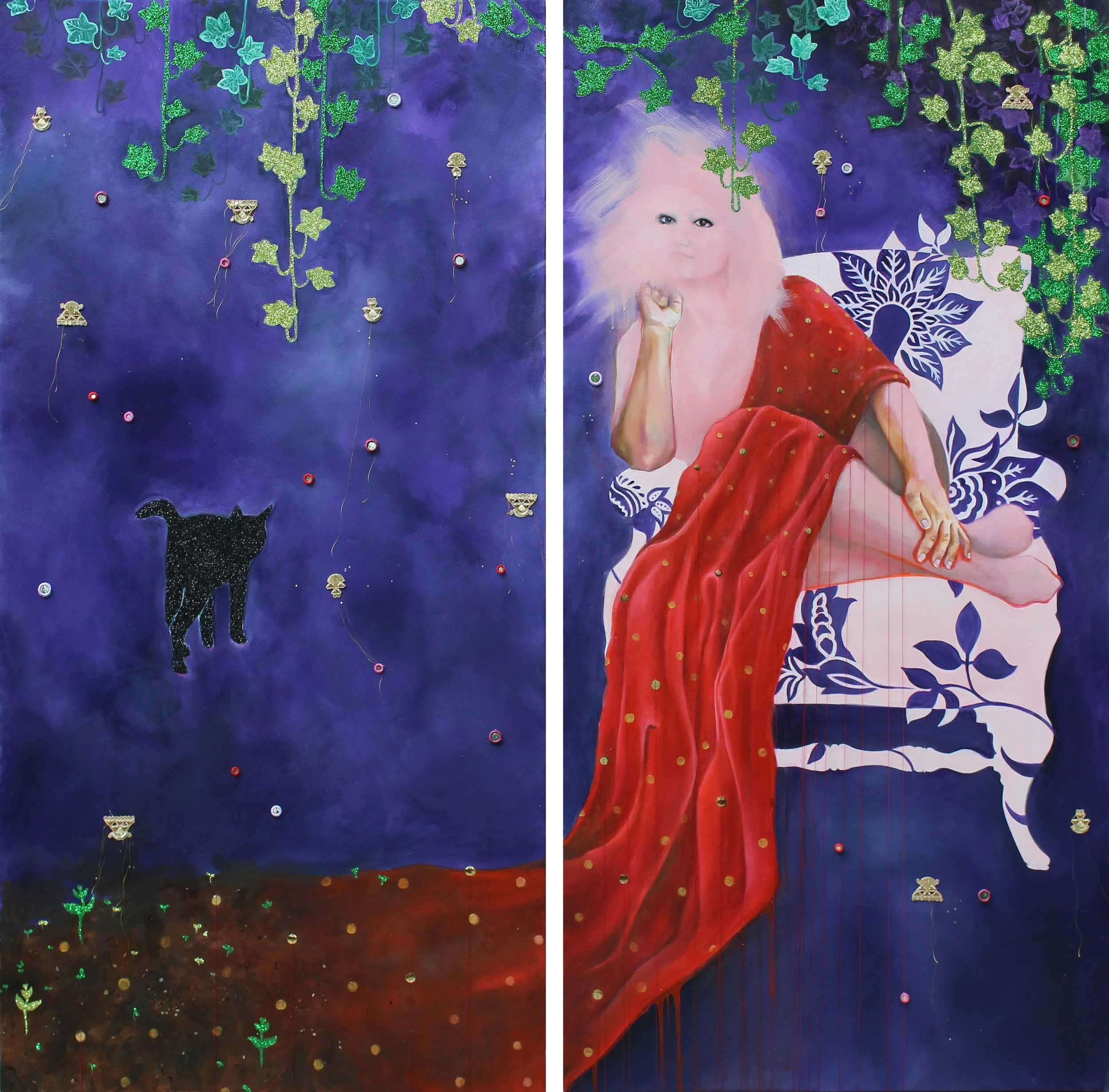SABA TAJ
2023 Brightwork Fellow
BIO
Saba Taj is a visual artist based in Durham, NC. Inspired by beauty, queerness, and Islam, Taj engages with representation as a resilience practice. Their work includes mixed-media drawing, painting, and collage, as well as sewing and performance. Through these techniques, Taj explores the liminality of minoritized individuals as an embodiment of resistance, hope and possibility. Taj was the 2019-2020 post-MFA Fellow for the Documentary Diversity Project at CDS, former Executive Director of The Carrack Modern Art, and Southern Constellations Fellow at Elsewhere Museum. They earned their MFA at the University of North Carolina at Chapel Hill, and their BA in Art Education at North Carolina Central University.
ARTIST STATEMENT
My work engages with representation and centers themes of beauty, power, and liminality. Ultimately, it is about magic, a thing I learned from Islam, the X-Men, and my lived experience. Magic is concerned with pushing the boundaries of what, of who, we believe to be possible. Prophets and mutants reveal truths beyond our existing scope of reality. I see that magic from the people in my life, people who are minoritized for being queer and trans, for being Black and brown, for being Muslim, for being multiple things at once, for being difficult to understand within the binary identities that were created to confine us. It is this embodied magic that I celebrate in my artwork, one that speaks of a present and future beyond our existing scope of reality.
In my work, I forefront the complexity of minoritized peoples, and have focused primarily on queer Muslims in the South. I illustrate this particular hybrid identity by combining references to Islam, queerness, and varied histories of Muslim diaspora. These combinations manifest into mixed media collage and portrait paintings.
My collage works center on chimeric figures constructed with clippings from National Geographic and fashion magazines from the U.S. and South Asia. These “femme-monsters” blur the boundaries between species, genders, bodies and environment; they exist and evolve in an imagined post-apocalypse.
In the portrait series there are gardens at the margins, I paint queer Muslims who are mostly friends and chosen family in my home of Durham, NC. My relationships with subjects and the commonalities of our experiences are crucial to the reciprocity of the work, as I relate to them not as an outside observer, but as a comrade. In the resulting portraits, subjects emerge from surrealist dreamscapes, cloaked with color and glitter, partial concealments which serve to maintain, rather than rectify, the implacability of these figures in mainstream American discourse. With these strategies, I aim to interrupt the lacerating gaze and as Trinh Minh-Ha describes, “speak nearby, in proximity...suspend meaning, preventing it from merely closing and hence leaving a gap in the formation process.”
Into this gap, I interject beauty as a language for devotion, an antidote for harm, and an alternative for publicly leveraging trauma in exchange for humanity. I render subjects and their environments lavishly; they shimmer with glitter, rhinestones, appliqués, and beads, objects and imagery that are drawn from our queer and diasporic heritages. Sewing in items like bridal tulle, golden thread and brocaded trims, I approach each artwork as a love letter, employing embellishment as a ritual of care.
This centralization of beauty relates to pleasure activism, coined by Adrienne Marie Brown. She describes that “pleasure activism is the work we do to reclaim our whole, happy, and satisfiable selves from the impacts, delusions, and limitations of oppression and/or supremacy,” that “we are in an imagination battle, and almost everything about how we orient toward our bodies is shaped by fearful imaginations. Imaginations that fear Blackness, brownness, fatness, queerness, disability, difference.” Accordingly, these works celebrate sensuality, pleasure, and imagination as radical disruptions to a colonized mentality.
I create this work for my friends at the intersections, the borders, the threshold, who deserve to witness themselves in beauty.
Click on image to expand.
WORKS BY SABA TAJ
Babyking, Oil paint, acrylic paint, silk flowers, organza, plastic pearls, glitter, sequins, beads, rhinestones, tassels, trims on canvas, 72" x 72", 2020.
At the Meeting of the Seas, Oil paint and glitter on canvas, 72" x 72", 2020.
Borders/Portals (are so Gay), Acrylic paint, oil paint, spray paint, gold leaf, glitter, 72” x 72”, 2020.
Honeyed Gardens Open, Acrylic paint, oil paint, spray paint, glitter, rhinestones, nazar beads, appliques, 66" x 78", 2021.
Interstitial Lush, Oil paint and glitter on canvas, 68" x 66", 2019.
Liminal Being(s), Oil paint, glitter, appliques, gold leaf, spray paint on canvas, 68" x 75", 2019.
Miraj, Acrylic paint, oil paint, spray paint, gold leaf, thread, glitter, rhinestones, shisha embroidery on canvas, 84" x 62", 2021.
Springtime in Barzakh, Oil paint, glitter, mica flake, thread, sequins, trims, shisha embroidery on canvas, 2 panels, 36" x 72", 2020.



